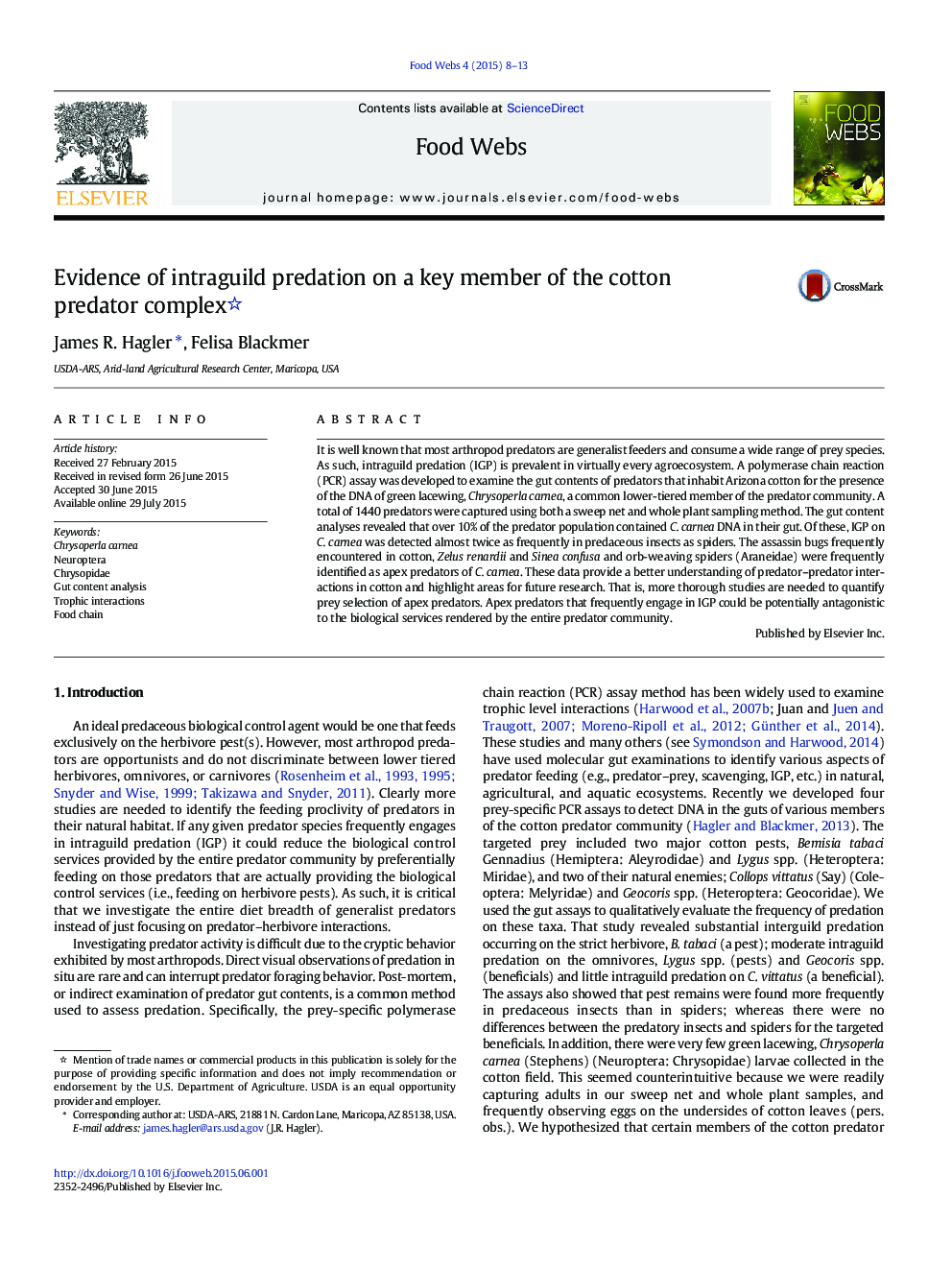| Article ID | Journal | Published Year | Pages | File Type |
|---|---|---|---|---|
| 4493280 | Food Webs | 2015 | 6 Pages |
It is well known that most arthropod predators are generalist feeders and consume a wide range of prey species. As such, intraguild predation (IGP) is prevalent in virtually every agroecosystem. A polymerase chain reaction (PCR) assay was developed to examine the gut contents of predators that inhabit Arizona cotton for the presence of the DNA of green lacewing, Chrysoperla carnea, a common lower-tiered member of the predator community. A total of 1440 predators were captured using both a sweep net and whole plant sampling method. The gut content analyses revealed that over 10% of the predator population contained C. carnea DNA in their gut. Of these, IGP on C. carnea was detected almost twice as frequently in predaceous insects as spiders. The assassin bugs frequently encountered in cotton, Zelus renardii and Sinea confusa and orb-weaving spiders (Araneidae) were frequently identified as apex predators of C. carnea. These data provide a better understanding of predator–predator interactions in cotton and highlight areas for future research. That is, more thorough studies are needed to quantify prey selection of apex predators. Apex predators that frequently engage in IGP could be potentially antagonistic to the biological services rendered by the entire predator community.
